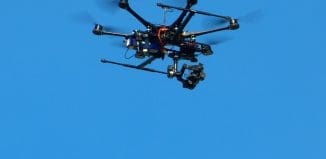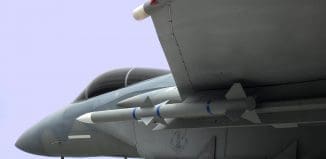The big budget shift
This post is also available in:  עברית (Hebrew)
עברית (Hebrew)
 That was expected for some time. The U.S largest military contractors, facing federal budget cuts and the withdrawals from two wars, are turning their sights to the Mexican border in the hopes of collecting some of the billions of dollars expected to be spent on tighter security if immigration legislation becomes law.
That was expected for some time. The U.S largest military contractors, facing federal budget cuts and the withdrawals from two wars, are turning their sights to the Mexican border in the hopes of collecting some of the billions of dollars expected to be spent on tighter security if immigration legislation becomes law.
According to the New York Times the Joint Intelligence Operations Center in Tucson, which coordinates border enforcement, is monitoring over 4,100 agents day and night.
Half a dozen major military contractors, including Raytheon, Lockheed Martin and General Dynamics, are preparing for an unusual desert showdown here this summer, demonstrating their military-grade radar and long-range camera systems in an effort to secure a Homeland Security Department contract worth as much as $1 billion.
i-HLS ISRAEL Homeland Security
Northrop Grumman, meanwhile, is pitching to Homeland Security officials an automated tracking device — first built for the Pentagon to find roadside bombs in Afghanistan — that could be mounted on aerial drones to find illegal border crossers. And General Atomics, which manufactures the reconnaissance drones, wants to double the size of the fleet under a recently awarded contract worth up to $443 million.
The military-style buildup at the border zone, which started in the Tucson area late in the Bush administration, would become all but mandatory under the bill pending before the Senate. It requires that within six months of enactment, Homeland Security submit a plan to achieve “effective control” and “persistent surveillance” of the entire 1,969-mile land border with Mexico, something never before accomplished.
For military contractors, that could be a real boon. “There are only so many missile systems and Apache attack helicopters you can sell,” said Dennis L. Hoffman, an Arizona State University economics professor who has studied future potential markets for the defense industry. “This push toward border security fits very well with the need to create an ongoing stream of revenue.”
Since 2005, the number of Border Patrol agents has doubled to 21,000, and the stretches protected by pedestrian or vehicle fencing have grown to 651 miles as of last year from 135. But there are still large swaths where people trying to enter the United States illegally have good odds of success, particularly in rural Texas. And with budget cutting in the past two years, money for surveillance equipment along the border has been pared back.






























